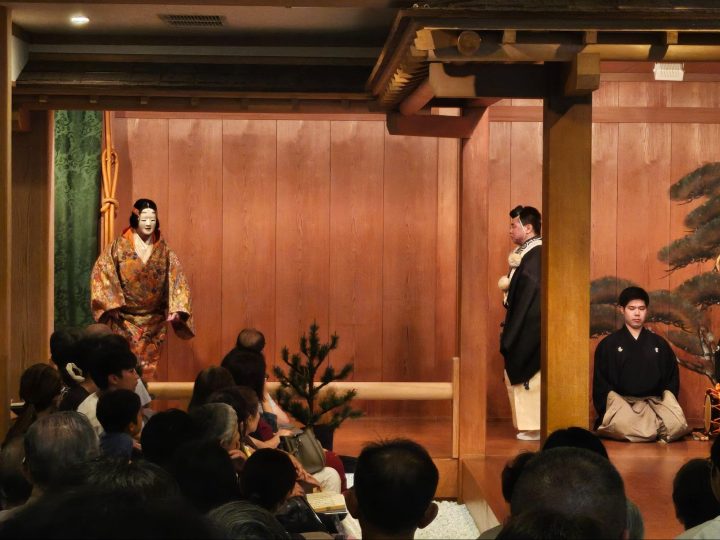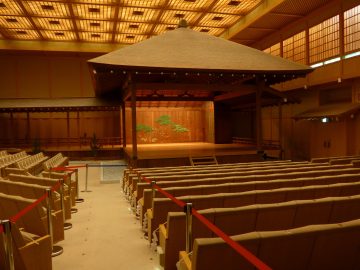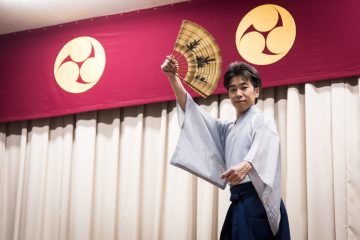"Silence, Love and Death - A creative stage production that combines Noh and opera" Enjoy the fusion of stories that transcend genres at Kanagawa Art Hall

"Shizu, Love and Death - A creative stage performance that combines Noh and Opera" Performance Outline
[Date and time] Saturday, August 7, 2021, 3:00 p.m. - 5:00 p.m. (live streaming)
[Distribution URL] https://www.youtube.com/watch?v=ykdgnhWYbTY (Archived distribution)
[Cast]
Part 1
Kamakura Noh Stage Public Interest Foundation
Kanta Nakamori (shite), Kara Tomisaka (child actor), Kazuyuki Fukuo (waki)
Shintaro Sugi (Noh flute), Yotaro Uzawa (small drum), Hirotada Kamei (large drum), Akiyoshi Sawada (taiko drum)
Kanze Yoshimasa (Jigashira)
Part 2
Singer affiliated with the Japan Opera Association
Ryoko Sunagawa (Sop. Shizuka), Yumiko Mukai (M.Sop. Zen Master Iso), Ryoichi Nakai (Ten. Yoshitsune),
Kenji Moriguchi (Br. Yoritomo) Akemi Yamada (20-string koto)
Akiko Sakurai (Satsuma Biwa), Kaho Tosha (Small Drum), Yuko Tanaka (Conductor)
Kanagawa Philharmonic Orchestra (Public Interest Incorporated Foundation)
Regarding sold tickets
Regarding refunds for purchased tickets, please contact the contracted operator of this project,
The Kanagawa Philharmonic Orchestra will contact you individually.
[The planned method of holding the event]
Held at the Kanagawa Prefectural Civic Hall (3-1 Yamashita-cho, Naka-ku, Yokohama) with paid spectators.
[Changed holding method]
A free live stream will be available on the day. Please note that the streaming schedule is subject to change.
Please check this page for the latest distribution information.
In the run up to the Tokyo 2020 Games, the Tokyo Organising Committee of the Olympic and Paralympic Games is collaborating with national and local governments, cultural organizations and others to hold the Tokyo 2020 NIPPON Festival across the country to promote the power of Japanese culture and the arts both domestically and internationally.
Kanagawa Prefecture is also taking part in the co-sponsored program of the Tokyo 2020 NIPPON Festival, and on August 7th, a performance will be held, planned and produced by the Kanagawa Philharmonic Orchestra, where visitors can enjoy the charm of a comprehensive art form that combines the classical Japanese art of Noh with the Western performing art of opera.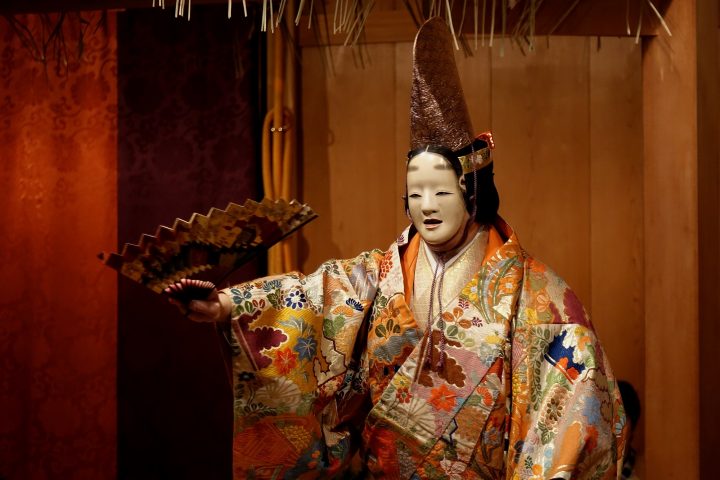
The story, based on the legend of Minamoto no Yoshitsune, will be performed in two parts, set in the ancient capital of Kamakura, one of Kanagawa Prefecture's most popular tourist areas.
The first part is a digest version of the Noh play "Funabenkei," and the second part is a digest version of the opera "Shizuka and Yoshitsune."
The biggest highlight is that the "time" of the Noh performance in the first half and the opera in the second half are connected.
The first half of the Noh performance depicts the separation between Shizuka Gozen and Yoshitsune, and then the play develops into the opera "Shizuka and Yoshitsune."
Noh and opera, two completely different genres, are brought together on one stage with the protagonist spinning the story - it is no exaggeration to say that this is the reason why this production is called a "fusion."
"Noh is a pure performing art that dislikes mixing, and is therefore a noble world in which it is difficult to collaborate with other genres. This time, we have previously collaborated with the shite actor Nakamori Kanta, and we carefully discussed the fusion parts so as not to violate the taboos of Noh, and this is how we came to realize this performance."
Toru Sakakibara, musical director of the Kanagawa Philharmonic Orchestra and producer of the project, said:
"Funabenkei" is a story created about 500 years ago based on the Tale of the Heike and the Azuma Kagami.
"Shizuka and Yoshitsune" is a Japanese opera produced and performed in 1993 as the opening performance of the Kamakura Performing Arts Center, by the collaboration of Japan's proud lyricist Nakanishi Rei and the world-renowned composer Miki Minoru, who represents not only Japan but also Asia.
These two stories will truly be "connected" in this performance, and I would like to convey to you as much as possible how precious and valuable this is, including the highlights of the performance.
Please continue to support us.
First, we should tell you the story behind the creation of the Japanese opera "Shizuka and Yoshitsune."
Even if you are not particularly a history buff, I think all Japanese people know the tragic love story of Shizuka Gozen. In 1993, Nakanishi decided to create the opera "Shizuka and Yoshitsune" as a living stage version of this story, as a commissioned work to commemorate the opening of the Kamakura Performing Arts Center, the setting of this tragic love story. At the time, Nakanishi said, "My intention was to give it life, voice and movement, make snow fall and bells ring, and imagine a world that is so real it could be mistaken for reality." And to compose the work, which is essential in the sense of literally breathing life into it, Nakanishi chose Miki Minoru, with whom he had worked the previous year on the opera "Wakahime," a masterpiece themed on ancient Japan, and whose talent as a composer he had fallen in love with.
Mr. Miki, with the belief that Japanese history and culture itself has international appeal and that he wants to prove that it has value abroad, has declared the creation of operas set in Japan to be his "life's work" and has continued to lead the Japanese opera scene. As his "life's work" suggests, Mr. Miki has spent 37 years tracing Japan's history back over one thousand and several hundred years, exploring the spirit of the times in each era and completing a magnificent series of nine operas about the history of Japan that beautifully express the unique beauty of each era.
Among these are "Shunkinsho," which was his debut work with the Japan Opera Association, and "Ada" and "Joruri," which he produced in collaboration with a famous British director and made Japanese opera known and established on the world stage. These works are widely screened as part of the Early Modern Trilogy, and are still loved and highly acclaimed around the world today.
A subsequent overseas commission, the New National Theatre's "Ai-en," which is popular in English-speaking countries, achieved the amazing feat of being the first Japanese opera to be performed by a foreigner at the Heidelberg Opera House in Germany in the 110-year history of Japanese opera.
In 1964, Mr. Miki participated in the formation of the Japanese Music Group, an ensemble of traditional Japanese instruments, and composed many pieces for traditional Japanese instruments. He is a pioneer in reviving the appeal of so-called ethnic instruments in contemporary Japanese music.
His focus on Japanese musical instruments was not limited to composition, but also extended to the development of the 20-string koto, which increased from 13 strings to 20 (later to the new 21-string koto) as an instrument with the expressive power suitable for contemporary music.
This development was a groundbreaking event that brought a new trend to the history of Japanese music and brought innovation to the techniques of performing Japanese instruments.
Miki's works are not limited to Western sounds; they skillfully incorporate Japanese sounds such as the koto and various other Japanese instruments, and are highly regarded both at home and abroad as a unique and established style of music.
What do you think of the opera "Shizuka and Yoshitsune" created by these two great masters of Taisho? It is a work of such grandeur that it makes you shiver just thinking about it.
And finally, after 26 years since its premiere in 1993, it was Aiko Gun, the general director, who finally managed to stage the long-awaited revival in 2019. Ms. Gun, who played the role of Zen Master Iso in the premiere, successfully realised the revival of this precious masterpiece two years ago.
The three plays in the main performance in August, Yoshitsune, Zen Master Iso, and Yoritomo, are a repeat performance from two years ago.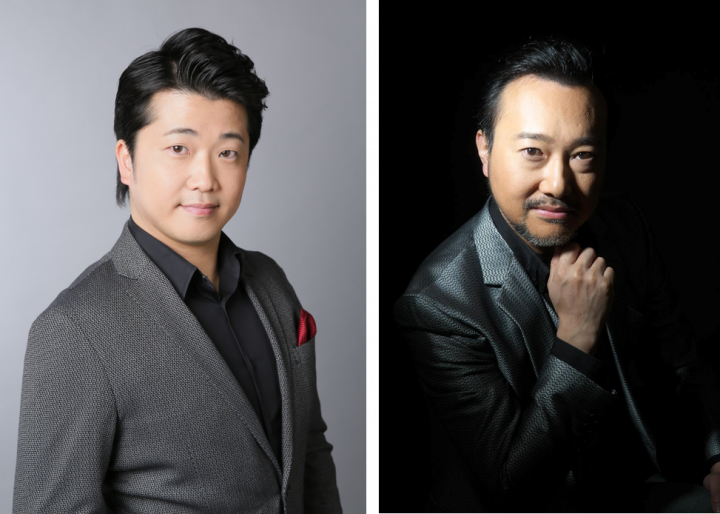 Ryoichi Nakai as Minamoto no Yoshitsune and Kenji Moriguchi as Minamoto no Yoritomo
Ryoichi Nakai as Minamoto no Yoshitsune and Kenji Moriguchi as Minamoto no Yoritomo
The lead role of Shizuka is played by Kyoko Sunagawa, a leading Japanese soprano who is also the prima ballerina of the Japan Opera Association. Her dramatic dancing and singing as a Shirabyoshi, a woman, and someone who yearns for her loved one is a must-see.
Akemi Yamada, who plays the twenty-stringed koto, has also been a performer since the premiere. Her koto performance blends beautifully with the Western instruments, creating a uniquely Japanese worldview.
Soprano Ryoko Sunagawa as Shizuka
As Nakanishi stated above, the love story of Shizuka and Yoshitsune is told through beautiful, refined Japanese and music, resulting in a work that is extremely tragic, yet very delicate and full of life.
A creative stage production weaving together two themes on the themes of "love and death" for two people into one play.
In the first half, "Funabenkei," Yoshitsune embarks on a romantic escapade with his concubine Shizuka Gozen to get away from his estranged brother Minamoto no Yoritomo. The difficult journey is so great that they are unable to overcome it and the two finally face the threat of separation at Omonoura. It is a powerful yet fleeting farewell dance that expresses the love and sorrowful emotions of the two who must be separated. This dance connects time to the second part, and this is the highlight of the piece. What kind of direction is used to connect the two?
At the beginning, I said that this connection, or "fusion" as it were, is the greatest attraction of this performance. If I were to tell you all about its charms here, it would take half the fun away, so let me just give you a hint.
The link between the two worlds is the Shirabyoshi dance, which Shizuka inherited from her mother, the Zen priest Iso, and which was the catalyst for her love with Yoshitsune. This is Shizuka's identity in the other world.
We hope you will enjoy the entire performance, from the final farewell dance in the first half to the Hachiman Shrine Shizuka Dance in the second part.
Another attraction of this production is that it is packed with creative ideas that anyone can enjoy, such as the inclusion of a biwa player who effectively connects the scenes and acts as a "storyteller," so to speak, to carry the story through the digest version.
The performers are shown on a sub-screen, the story is supplemented with subtitles, and the protagonist's emotional changes are made easier to understand, so even the highlight performances in the large hall are carefully designed to make the show easy to understand.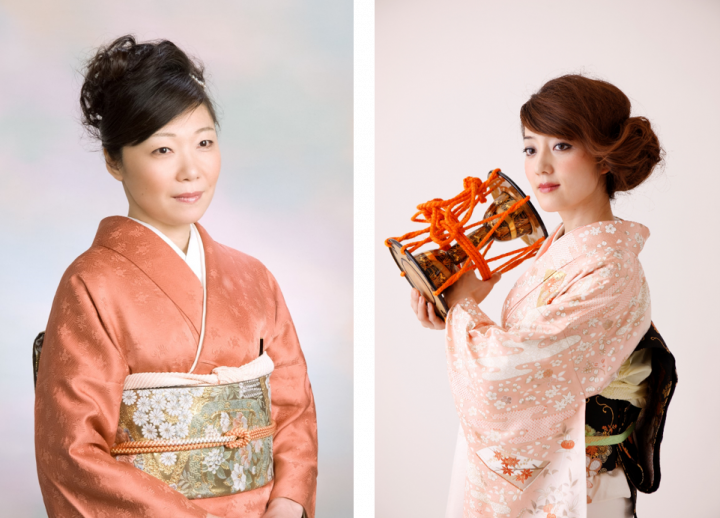 Twenty-stringed koto (koto) by Akemi Yamada; small drum by Kaho Tosha
Twenty-stringed koto (koto) by Akemi Yamada; small drum by Kaho Tosha
And finally, lighting. It is a very important element that gives time and light to the stage, and expresses the space and characters more emotionally.
"The lighting, which we have fully installed, is not of the classical, solemn style of Noh from the first act onwards, but rather modern, witty designs that are in keeping with the drama. In particular, the second act depicts the beauty of Shizuka, who ascends to heaven with Yoshitsune in fulfillment, from the wintery Mount Yoshino to the spring-like Tsurugaoka Hachimangu Shrine, under the falling snow," said Sakakibara, mentioned above.
This play was created transcending genres, countries and even eras, with the theme of "love and death" - something that is both universal and eternal for humans, and especially for those of us living today.
In these times, why not visit and nourish your soul with some wonderful food?
Regarding "Shizuka, Love and Death - A Creative Stage Performance Combining Noh and Opera" (scheduled to be held on August 7, 2021), which was announced at a press conference on Tuesday, June 1, 2021, in order to prevent the spread of COVID-19 within the prefecture and to ensure a safe and secure environment, the event will be held without an audience and will be live-streamed (free of charge).
